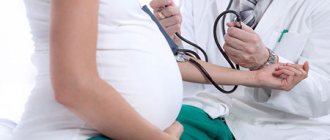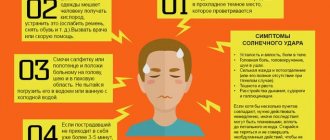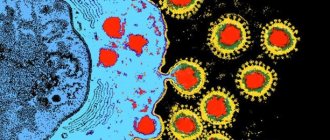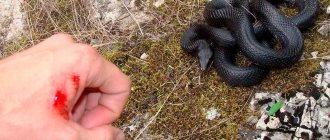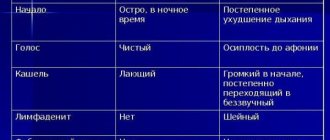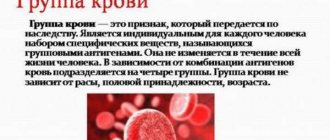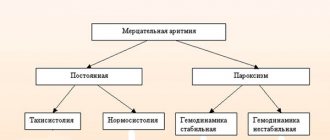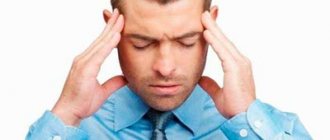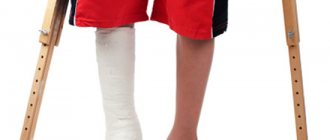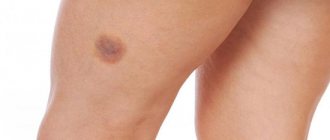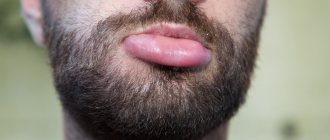What is meningitis
A neuroinfection that affects the soft membranes of the brain and spinal cord is called meningitis. Before entering the brain, it destroys the blood-brain barrier, which protects the gray matter from various kinds of “parasites”. Meningitis is a very dangerous disease, which is much more often diagnosed in young patients. It often causes serious complications (damage to nerve endings, brain swelling) and leads to death if treatment is neglected.
Types of childhood meningitis according to the nature of development:
- primary – a separate independent disease with the absence of a local inflammatory process in the organs;
- secondary - damage to the meninges is caused by a general or local infectious disease.
The main reasons for the development of inflammatory infection:
One of the main causes of meningitis is an infection in the meninges. It enters through the airborne, hematogenous, fecal-oral or lymphogenous routes. The infection develops in a child’s body with the help of:
- bacteria (Escherichia coli or tubercle coli, staphylococcus, streptococcus);
- fungi (candida, cryptococcus);
- viruses (herpes, mumps).
Weakened immunity, which is caused by:
- regular hypothermia;
- chronic diseases;
- diabetes mellitus;
- HIV infection;
- congenital abnormalities of the immune system.
Prevention measures
Take care of your child’s hygiene, wash your hands, do not put dirty things in your mouth, and take more walks in the fresh air. Limit contact with children who are infected with meningitis, do not let the child contract the disease from others. Get preventive vaccinations every year according to the Russian calendar. During the epidemic season, wear gauze bandages to avoid contracting viruses. Do not swim with sick children anywhere.
Advice: some bacteria are very weak to fight with, so we suggest you teach your child to wash his face, brush his teeth, and don’t forget this yourself, gargle with water after coming from the street, kindergarten or school.
There are no absolutely reliable and best means to protect your child from the disease, but if you follow the rules described above, your child will be able to overcome meningitis. To do this, you need to follow the rules and conditions for eliminating meningitis.
Signs of meningitis in children
In most cases, the signs of meningitis in children manifest themselves almost equally in young patients and adults. An unfavorable prognosis appears when parents ignore the manifestations of the disease and therapy is not started on time. Judging by medical observations, common clinical signs of meningitis in a child are as follows:
- severe weakness, general malaise;
- significant increase in temperature;
- loss of consciousness;
- vomit;
- another sign of meningitis in children is intense pain in the head, joints, and muscles;
- fever, chills;
- decreased appetite;
- convulsions;
- the appearance of a runny nose, redness of the throat;
- rigidity (a sharp increase in muscle tone, their resistance to deformation);
- a sick child almost always lies on his side, with his legs tucked in and his head thrown back.
There are also general specific factors that signal the presence of a neuroinfection. Often, the doctor uses them to make a final, accurate diagnosis. Here's how meningitis manifests itself in children:
- Stiff neck. Constant tilting of the child's head due to strong muscle tone.
- Kernig's sign. With meningitis, the ability to straighten the lower limb at the knee joint disappears if it is bent at the hip. This symptom of the disease is caused by significant tone of the posterior thigh muscles.
- Buccal syndrome. When the doctor presses on the patient’s cheeks, the sick child raises his shoulders upward and the elbow joints flex.
- Contraction of facial muscles during tapping of the zygomatic arch (Bechterew's syndrome).
- Lessage's symptom is characteristic of infants up to one year old. It consists in the fact that the baby involuntarily bends his legs when he is lifted up and held by the armpits.
- Mondonesi syndrome is a very severe pain that appears with slight pressure on closed eyelids.
- Brudzinski's sign. Upper type - if a small patient lies on his back, his legs will involuntarily bend at the knees when the doctor tries to tilt his head towards the sternum. The average symptom is that the child’s lower limbs bend when pressing on the symphysis pubis. When one leg bends at the knee joint and hip, and the second takes an identical position, this is the lower Brudzinski symptom.
In children under one year old
Standard general signs of meningitis in infants:
- partial or complete refusal of food or liquid;
- the appearance of rashes, yellowing of the skin;
- severe vomiting (attacks will be repeated frequently);
- Hypoglycemia (low blood sugar levels) may begin;
- neck muscle tension;
- lethargy (hypotension), weakness;
- temperature increase;
- the infant shows irritation and is capricious;
- swelling of the fontanelle is also a sign of meningitis in children under one year of age.
Meningitis rash
It is not uncommon for a child to develop a rash due to meningitis, which is caused by a microorganism such as meningococcus. When the infectious disease is mild, the rash looks like small dots of a dark red color. As a rule, this symptom disappears after a few days. Severe disease causes a rash in the form of large spots and bruises. The localization of this sign of meningitis is the arms, legs, torso. The rashes are located asymmetrically.
Symptoms of meningitis
Doctors divide the symptoms of meningitis into three types: general infectious, meningeal, and cerebral. These factors are discussed in more detail below. The first signs of meningitis in children of a general infectious nature:
- severe pain in the head and muscles;
- dyspnea;
- elevated temperature;
- cardiopalmus;
- pale skin;
- abdominal pain;
- decreased appetite;
- Symptoms of meningitis in children include a feeling of extreme thirst;
- blue discoloration of the nasolabial triangle.
Specific meningeal symptoms in children:
- increasing headache;
- moodiness, anxiety, crying caused by touching the baby (explained by muscle pain);
- constant vomiting “fountain” (does not depend on diet);
- convulsions;
- other symptoms of meningitis in children are photophobia, negative reaction to loud sounds;
- dark-colored rash (hemorrhagic rash);
- tension in the neck muscles;
- meningeal signs in children - impaired vision and hearing;
- hallucinations may occur;
- frequent dizziness, fainting;
- falling into a coma.
General cerebral symptoms of meningitis in children include:
- constant bouts of vomiting, after which there is no relief;
- the appearance of a bright venous network on the eyelids and head of the child;
- disturbances in consciousness;
- intense pain in the head;
- dilation of blood vessels in the fundus;
- convulsions: from trembling of individual muscles to serious seizures;
- In infants with meningitis, divergence of cranial sutures may occur.
The first symptoms of meningitis
Neuroinfection often appears suddenly: the child feels well, but literally the next day the first symptoms of meningitis may appear. They are initially more pronounced in children of the older age group, and in children of the first year of life, symptoms are not always immediately observed. The incubation period for inflammatory brain pathology is from two to ten days. After the “activation” of infectious agents, the first general intoxication symptoms appear:
- delirium, confusion;
- nausea, severe vomiting;
- a sudden jump in temperature to high levels;
- muscle pain;
- unbearable headache, which is often accompanied by fainting;
- increased tactile, visual and auditory sensitivity.
In teenagers
When the infection enters the lining of the brain, the first signs of meningitis appear in a teenager. Manifestations of the disease in children over ten years of age are almost the same as those of an adult man or woman. The main symptoms of meningitis in adolescents:
- sudden increase in temperature (37-39 degrees);
- rhinitis can also be a symptom of meningitis;
- nausea, severe vomiting;
- loss of appetite;
- intense headaches;
- rashes on the body;
- muscle rigidity;
- general malaise, drowsiness, weakness.
Serous meningitis
The rapid development of damage to the meninges, which is characterized by serous inflammation, is meningitis of the serous type. This diagnosis is often given to children between three and six years old. The disease can develop over several days or cause a rapid inflammatory process that requires urgent treatment. Symptoms of serous meningitis in children include:
- dizziness, loss of consciousness;
- hallucinations caused by high temperature (more than 38 degrees);
- convulsions;
- tremor of the limbs;
- paresis of the facial nerve, impaired motor coordination;
- severe headaches caused by increased intracranial pressure.
Treatment
REFERENCE! With this disease, the child is urgently admitted to the hospital.
In addition to general tests, to clarify the diagnosis, a spinal puncture is taken - a small amount of cerebrospinal fluid is taken through a puncture in the lower back. Based on its examination, the causative agent of the disease is identified and the type of meningitis is determined. After this, treatment is prescribed.
For bacterial etiology, broad-spectrum antibiotics are prescribed - cephalosporins, penicillins and others.
Treatment of viral meningitis consists of taking antiviral drugs :
- Acyclovir.
- Interferon.
- Artepol, etc.
Headaches and intracranial pressure are caused by pressure on the brain from accumulated fluid. To alleviate the condition, diuretics are prescribed - Furosemide or Lasix. A sedative that does not have an aggressive effect on the central nervous system is also prescribed - Seduxen or Domosedan.
This is done to generally reduce anxiety in the child and to eliminate seizures. Be sure to prescribe a complex of vitamins and restore the water-salt balance (intravenous solutions).
IMPORTANT! If treatment is not carried out immediately or incorrectly, the consequences will be irreparable: epilepsy, hydrocephalus, paralysis, mental retardation, the child may fall into a coma and even die.
Meningitis is a dangerous disease that requires immediate assistance, so it is important to know its signs for timely treatment. Preventive measures will include vaccination, strengthening the immune system and preventing infections of various origins.
Diagnostics
Before prescribing treatment, the specialist carries out diagnostic measures. The child is examined using different techniques. The main methods for diagnosing meningitis:
- First, the infectious diseases doctor (or neurologist) conducts a conversation with the patient’s parents. Finds out how long ago they noticed the symptoms of the disease and how pronounced they are. This is followed by a thorough examination of the sick child to identify and confirm symptoms.
- Lumbar puncture (cerebrospinal fluid collection). Lumbar puncture helps to verify the exact diagnosis and determine the type of meningitis.
- Cytological study of cerebrospinal fluid (fluid from the ventricles of the brain). Inflammation of the meninges is established if, during puncture, cerebrospinal fluid flows out in streams or an increase in the level of lymphocytes is recorded in it.
- X-rays and computed tomography of the skull are used to determine the causative agent of the infection and the nature of the inflammation.
- Immunological analysis - detection of antibodies, viral antigens. There are two types of research: polymer chain reaction (PCR) and ELISA.
- Test to detect diplococci and cocci in the body. To do this, mucus is collected from the nasopharynx, skin scrapings and blood smears.
First aid
Before the doctor arrives or while waiting for hospitalization, it is necessary to alleviate the child’s condition:
- He needs to be put down and not allowed to get up even to go to the toilet; use a diaper for this.
- Give water constantly, but do it reclining.
- Remove all external irritants, create twilight, peace and quiet.
- If nausea occurs, you should turn the patient's head to the side and make sure that he does not choke on vomit.
- No medications are given for suspected meningitis.
- Before the doctor arrives, you should not leave the patient alone; you need to carefully monitor his condition, calm him down so that the doctor can conduct an examination and the necessary examination.

